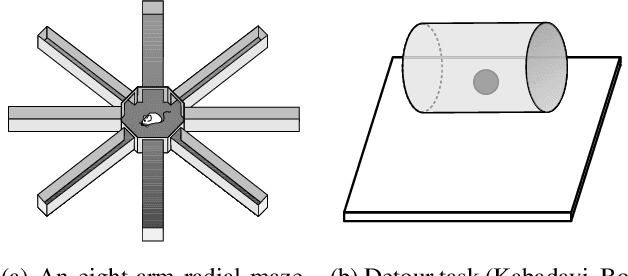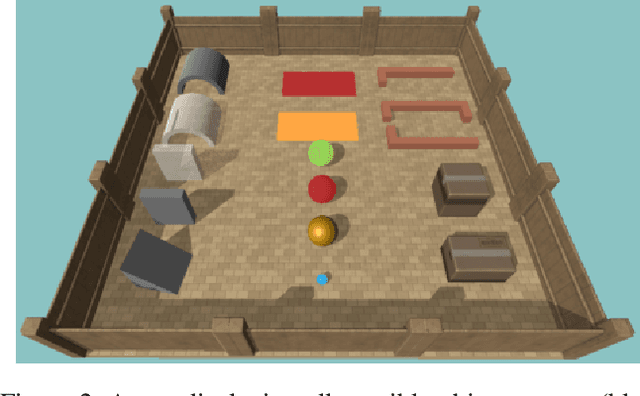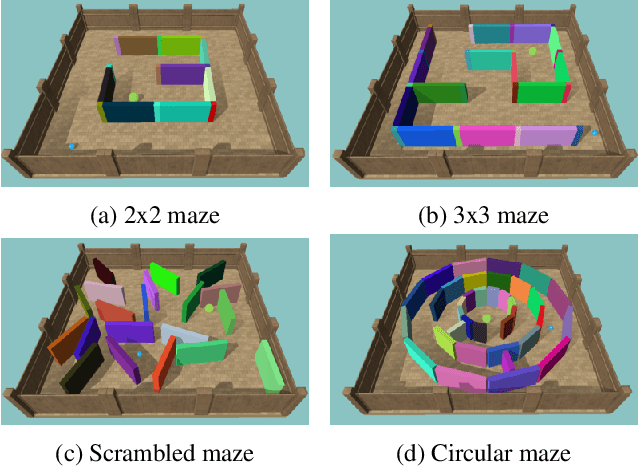Marta Halina
Exploring Major Transitions in the Evolution of Biological Cognition With Artificial Neural Networks
Sep 17, 2025Abstract:Transitional accounts of evolution emphasise a few changes that shape what is evolvable, with dramatic consequences for derived lineages. More recently it has been proposed that cognition might also have evolved via a series of major transitions that manipulate the structure of biological neural networks, fundamentally changing the flow of information. We used idealised models of information flow, artificial neural networks (ANNs), to evaluate whether changes in information flow in a network can yield a transitional change in cognitive performance. We compared networks with feed-forward, recurrent and laminated topologies, and tested their performance learning artificial grammars that differed in complexity, controlling for network size and resources. We documented a qualitative expansion in the types of input that recurrent networks can process compared to feed-forward networks, and a related qualitative increase in performance for learning the most complex grammars. We also noted how the difficulty in training recurrent networks poses a form of transition barrier and contingent irreversibility -- other key features of evolutionary transitions. Not all changes in network topology confer a performance advantage in this task set. Laminated networks did not outperform non-laminated networks in grammar learning. Overall, our findings show how some changes in information flow can yield transitions in cognitive performance.
Animal-AI 3: What's New & Why You Should Care
Dec 18, 2023



Abstract:The Animal-AI Environment is a unique game-based research platform designed to serve both the artificial intelligence and cognitive science research communities. In this paper, we present Animal-AI 3, the latest version of the environment, outlining several major new features that make the game more engaging for humans and more complex for AI systems. New features include interactive buttons, reward dispensers, and player notifications, as well as an overhaul of the environment's graphics and processing for significant increases in agent training time and quality of the human player experience. We provide detailed guidance on how to build computational and behavioural experiments with Animal-AI 3. We present results from a series of agents, including the state-of-the-art Deep Reinforcement Learning agent (dreamer-v3), on newly designed tests and the Animal-AI Testbed of 900 tasks inspired by research in comparative psychology. Animal-AI 3 is designed to facilitate collaboration between the cognitive sciences and artificial intelligence. This paper serves as a stand-alone document that motivates, describes, and demonstrates Animal-AI 3 for the end user.
The Animal-AI Environment: Training and Testing Animal-Like Artificial Cognition
Sep 18, 2019



Abstract:Recent advances in artificial intelligence have been strongly driven by the use of game environments for training and evaluating agents. Games are often accessible and versatile, with well-defined state-transitions and goals allowing for intensive training and experimentation. However, agents trained in a particular environment are usually tested on the same or slightly varied distributions, and solutions do not necessarily imply any understanding. If we want AI systems that can model and understand their environment, we need environments that explicitly test for this. Inspired by the extensive literature on animal cognition, we present an environment that keeps all the positive elements of standard gaming environments, but is explicitly designed for the testing of animal-like artificial cognition.
 Add to Chrome
Add to Chrome Add to Firefox
Add to Firefox Add to Edge
Add to Edge